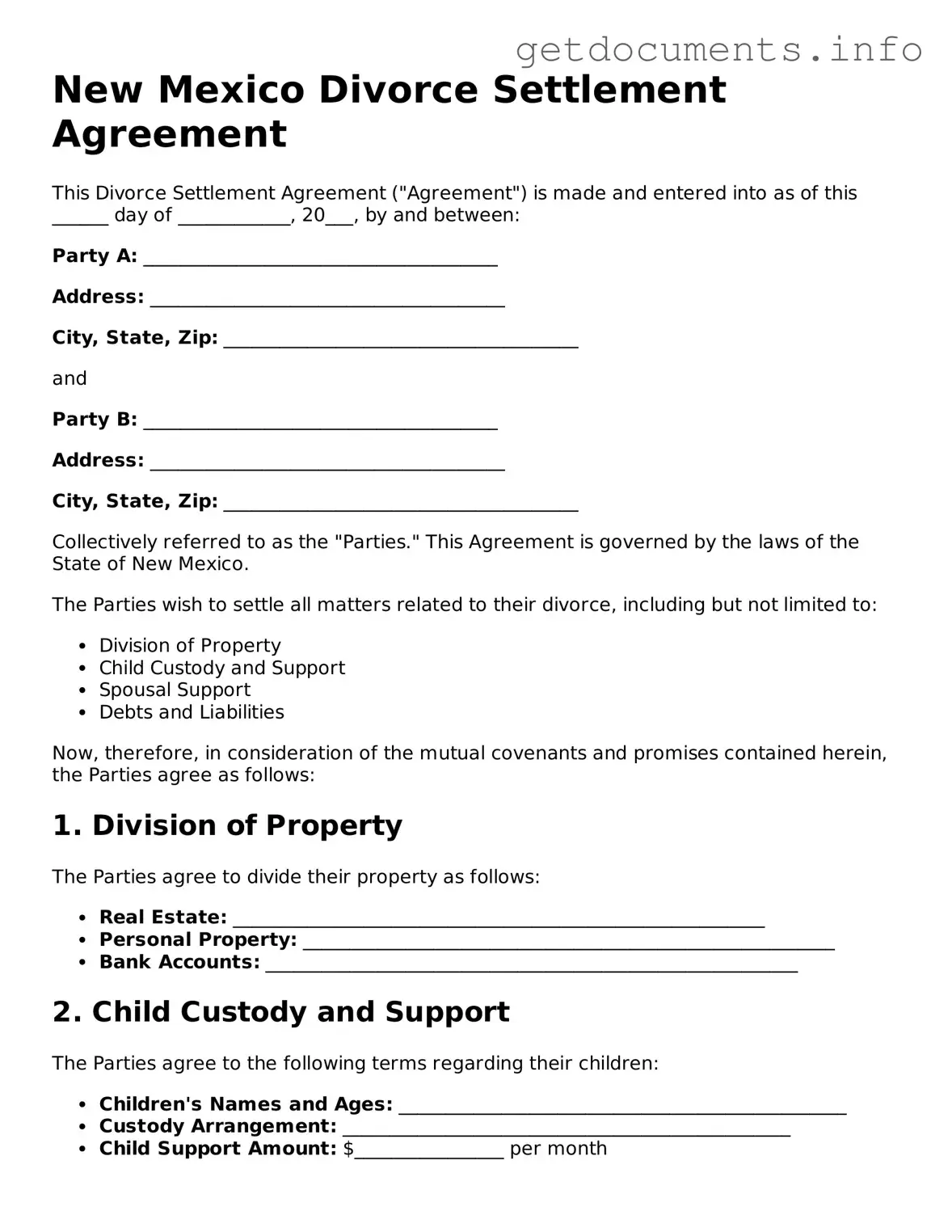Free Divorce Settlement Agreement Template for New Mexico
The New Mexico Divorce Settlement Agreement form is a legal document that outlines the terms and conditions agreed upon by both spouses during a divorce. This form is essential for ensuring that all matters related to property division, child custody, and support are clearly defined and mutually accepted. Completing this form accurately can help facilitate a smoother divorce process.
Ready to take the next step? Fill out the form by clicking the button below.
Access Divorce Settlement Agreement Editor
